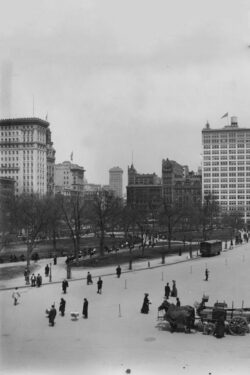What are the social and political dimensions of industrial innovation and technological change? In the 1880s and ‘90s, Joanna Merwood-Salisbury argues, the skyscraper was the subject of an ideological battle, as both the symbol of capitalism’s triumph and the target of anti-capitalist protest. As metal replaced masonry in tall-building construction, traditional building trades such as bricklayers and carpenters lost power and new trades, including ironworkers, gained importance. General contractors, architects, and engineers organized into professional groups to manage the complexity of industrialized construction.
The tall buildings they designed and erected were occupied by new kinds of urban workers – not only office employees but also immigrant laborers engaged in manufacturing. Tracing labor protests in the construction industry in Chicago in the 1880s and the movement to improve working conditions for garment industry workers in New York’s commercial lofts in the early twentieth century, Merwood-Salisbury examines the formation of unions uniting trades-based groups with ethnic organizations, as well as the public spaces of their protest movements.
Readings
View the DISCUSSION with Carol Willis's introduction and dialogue with Joanna Merwood-Salisbury and Thomas Leslie.
